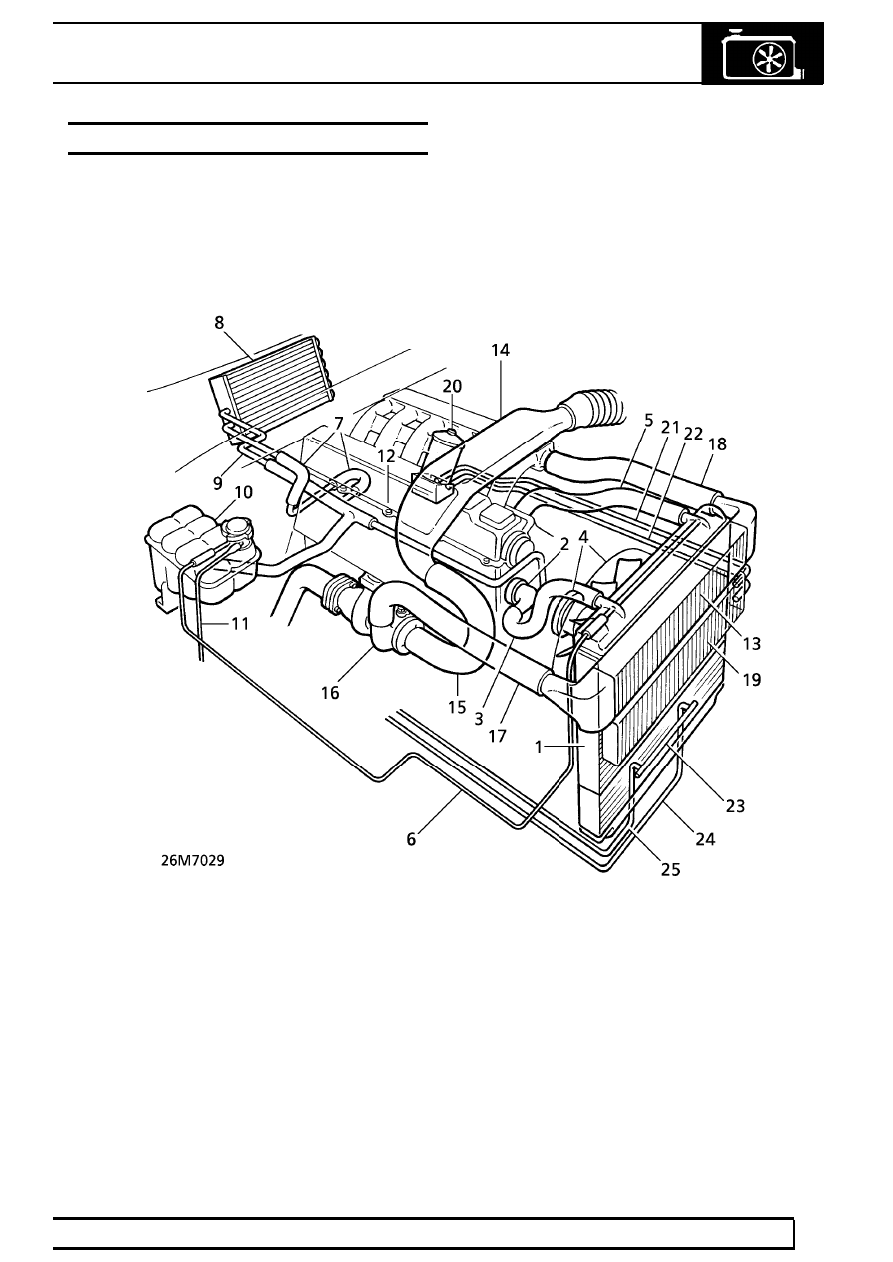Range Rover. Manual - part 116

BMW DIESEL
1
DESCRIPTION AND OPERATION
DIESEL COOLING SYSTEM
The complete cooling system installed in vehicles with
diesel engines incorporates four independent cooling
functions:- Engine (coolant) cooling; Turbo (charge
air) intercooling; Engine oil cooling; Gearbox oil
cooling.
Both intercooler and engine oil cooler are mounted in
front of the radiator while the gearbox oil cooler on
manual vehicles is an integral part of the radiator.
Pre-formed pipes/hoses are used to link the
components within the separate systems, as shown in
26M7029.
Engine cooling system
1. Radiator
2. Thermostat housing
3. Radiator return hose
4. Viscous fan and water pump
5. Radiator top hose
6. Radiator bleed pipe
7. Heater feed pipe
8. Heater matrix
9. Heater return pipe
10. Expansion tank
11. Overflow/breather pipe
12. Crankcase
13. Intercooler
14. Cross-over duct
15. Link hose
16. Turbocharger
17. Inlet pipe
18. Feed hose
19. Engine oil cooler
20. Oil filter
21. Feed pipe, engine oil cooler
22. Return pipe, engine oil cooler
23. Gearbox oil cooler (manual
gearbox, oil cooler shown)
24. Feed pipe, gearbox oil cooler
25. Return pipe, gearbox oil
cooler